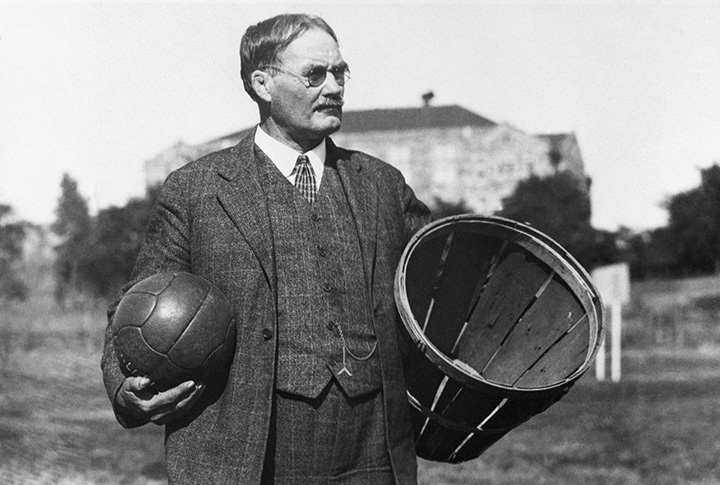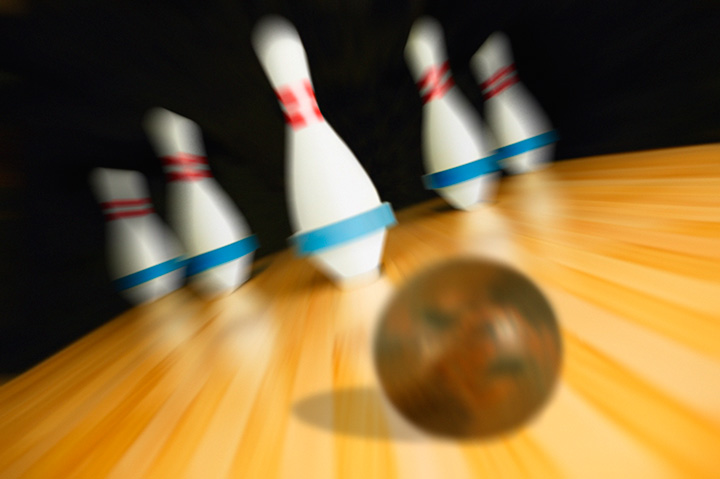Canadians are innovative. From inventing the telephone and the snowmobile, to the Wonderbra and the zipper, we also had our hands in athletics. Here’s a look at four sports you can thank Canada for.

Basketball:
In 1891, Dr. James Naismith, a former McGill University phys-ed teacher, took a teaching job at the YMCA International Training School in Springfield, Mass. There, the Almonte, Ont., native was tasked with creating a new indoor activity for his gym class during the harsh winter.
After attempts at keeping his students occupied with modified versions of typical outdoor sports, Naismith came up with a new idea. He nailed two peach baskets up at each end of the gym and gave his class an old soccer ball.
READ MORE: Why you can thank Canada for basketball, one of the world’s most popular sports
“I told them the idea was to throw the ball into the opposing team’s peach basket. I blew a whistle and the first game of basketball began,” Naismith explained during a rare radio interview in 1939. The Canadian admitted the first attempt didn’t go so well. But things improved after he created the 13 original rules of the game. Among those rules was no tackling your opponent to get at the ball.
READ MORE: Canada 150
Basketball went on to debut at the 1936 Olympic Games in Berlin and is now one of the world’s most popular sports.
Hockey:
Though the origins have been widely debated, there’s no question that hockey is Canada’s game. Whether it was first developed in Windsor, N.S., Kingston, Ont., or in Montreal (heck, even new research suggest the birthplace of hockey was in the U.K.) it was on March 3, 1875 when modern hockey was first established during an indoor game at Victoria Skating Rink in Montreal.
Halifax native James Creighton organized the game with mainly McGill University students. The nine-member teams played on the ice with a flat wooden puck. By 1877, some basic rules were established which included no forward passing and seven players on the ice. The first hockey team, the McGill Hockey Club, was established two years later. From there, the Amateur Hockey Association of Canada was formed in 1886, which included members from Ottawa, Quebec City as well as Montreal.
Hockey quickly gained in popularity and in 1892 Governor General Lord Stanley donated the Dominion Challenge Cup, now known as the Stanley Cup. In 1895, the Coloured Hockey League was established in Nova Scotia, and women’s teams formed at McGill a year later.
In 1909, the National Hockey Association was established which – in 1917 – became the National Hockey League. Hockey went on to debut at the 1920 Summer Olympics in Antwerp. From there hockey grew and evolved into the sport we know today.
READ MORE: An interactive timeline of the evolution of hockey in Canada
Lacrosse:
Known as one of the oldest sports in North America, the roots of lacrosse date back to long before European settlers reached Canada. First Nations played a form of the sport, often referred to as “baggatawa”or “tewaarathon” or simply “stickball.” According to the Federation of International Lacrosse, the game was first played in the St. Lawrence Valley area by the Algonquin First Nations in the 1630s before the game began to spread.
In 1834, Caughnawaga First Nations held a demonstration of the sport in Montreal which led to the further development of the game. From there, Dr. William George Beers founded the Montreal Lacrosse Club and went on to write the basic rules and fundamentals of the game. By 1860, lacrosse had been named Canada’s National Game. Lacrosse went on to make its debut in the 1904 Olympic Games in St. Louis.
5-pin bowling:
Playing with big balls isn’t always a good thing, as Thomas F. Ryan figured out. Ryan, a businessman and sports enthusiast, opened Canada’s first 10-pin bowling alley above a jewelry store in downtown Toronto in 1905. The exclusive “members only” club featured 10 lanes, potted palm trees, and as Canada’s Sports Hall a Fame points out, a string orchestra.
As the story goes, many members of Ryan’s club began to complain the 10-pin game took too long to complete on their lunch break and the 16-pound ball was too heavy. So, from there, Ryan had his father whittled it down to five pins while Ryan tasked himself with creating a hand-sized, two-and-half pound ball and tweaking the scoring system.
By 1909 Ryan had experimented long enough and the game of 5-pin bowling was established. By 1910, Canada’s first 5-pin bowling league was formed.
Read more Canada 150 coverage.








Comments